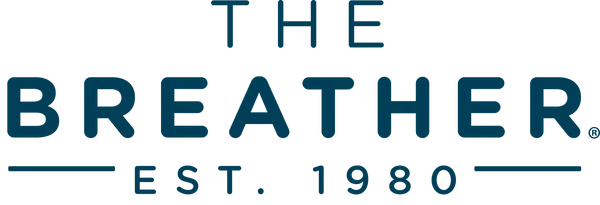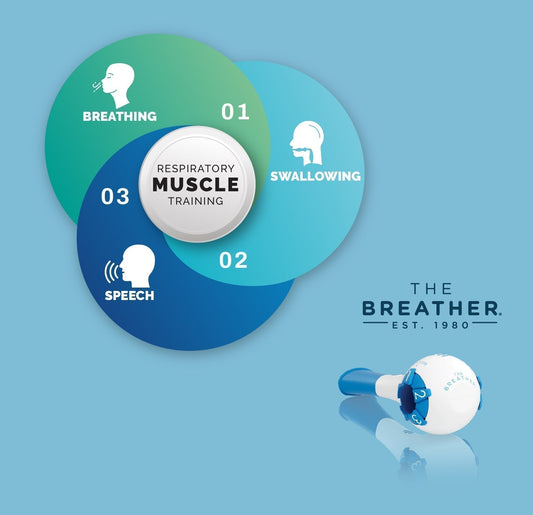Sudden and unwanted urine leakages are common after childbirth, menopause, or in older age, and can lead to inconvenience and embarrassment.
What if there was a natural way to strengthen your pelvic floor muscles? You could do this without invasive treatments, heavy medicines, or complicated exercises. Let me introduce you to Respiratory Muscle Training (RMT). This new method helps reduce leakage issues and is gaining attention in health circles.
A recent study showed that RMT improves lung function and strengthens pelvic floor muscles. This offers a natural way to regain bladder control. Imagine taking control of your health with a simple tool that empowers you from the comfort of your own home.
THE BREATHER is a non-invasive, drug-free, easy-to-use RMT device that seamlessly fits into your daily routine.


This article will examine the science behind the relationship between urine leakage and RMT. The discussion will also cover how THE BREATHER might be the solution you need. Let’s explore the potential of this innovative approach and learn how it can help you feel more confident and in control.
Understand urinary Incontinence: symptoms, causes, and treatment options
Urinary incontinence is the involuntary leakage of urine due to loss of bladder control. This condition affects both genders, however, it is more common in females. A national survey data showed that about 61.8% of adult U.S. women experience some form of bladder leakage [1]
This is a large number, so every woman should know the common symptoms, causes, and treatments for urine leakage issues.
What are the common symptoms and types of urinary incontinence in women?
Every woman may experience urine leakage symptoms in different ways. Some may have occasional, minor leaks, while others may lose small to moderate amounts of urine. Let’s learn about the common types and the symptoms of urinary incontinence in women which include:
-
Stress incontinence is when you leak urine unknowingly because of the pressure on your bladder. Common triggers include sneezing, coughing, laughing, running, exercising, straining, or lifting something heavy. This is the most common type of urinary incontinence in women.
-
Urgency incontinence means you feel a sudden and intense need to urinate, followed by leakage. Sometimes, you are unable to hold urine long enough to reach a restroom.
-
Functional incontinence is when you leak urine because you can't get to the restroom in time. This often happens due to a physical impairment.
-
Overflow incontinence happens when urine leaks out because the bladder is too full. This can occur due to making too much urine or not emptying the bladder properly.
-
Mixed incontinence is when you simultaneously have both stress and urgency incontinence. [2]
What are the important causes of urinary incontinence in women?
Women may experience urinary incontinence due to several reasons which involve:
-
Weakened pelvic floor muscles
-
Old age
-
Obesity
-
Pregnancy
-
Childbirth
-
Hormonal changes after menopause
-
Some diseases
What are the treatment options for women's urinary incontinence?
The treatment landscape of urinary incontinence revolves around the type and cause of incontinence. These options may include pelvic floor muscle exercises, behavioral therapies, medication, or surgery.
The most recent one is respiratory muscle training. It naturally strengthens the pelvic floor muscles and reduces leakage frequencies in women.


How respiratory muscle training can help in urinary incontinence treatment
Respiratory muscle training is a unique exercise for your lungs. Instead of requiring a gym, you can perform it from the comfort of your home. In this training, you breathe in and out using a special device. This helps you train your diaphragm, which is the main breathing muscle in your body.
Pelvic floor muscles are important in urine control because they stabilize the bladder neck. When your pelvic floor muscles get weak, you lose control of your bladder which results in unwanted leakages. Strengthening your pelvic floor muscles automatically reduces your unintentional leaks.
The good news is that you can strengthen your pelvic floor muscles with breathing exercises. This is possible because pelvic floor muscles are linked with the diaphragm through their coordinated movements [3]
RMT not only strengthens the breathing muscles but also improves the strength and endurance of pelvic floor muscles[4]. Therefore, by strengthening pelvic floor muscles naturally, RMT improves bladder control, ultimately providing an innovative urinary incontinence solution.
Clinical evidence validating RMT in stopping the leakages naturally
Recently, an innovative scientific research study was published in the “International Urogynecology Journal”. It highlights the significance of respiratory muscle training for women suffering from urinary incontinence.
The research findings showed that women who did RMT for 12 weeks had less severe urine leakages. The research study also showed that pelvic floor muscle strength and endurance improved significantly after training [4]
This is a groundbreaking finding. It is a blessing for women who want easy, non-invasive treatments for urinary incontinence.
Why THE BREATHER is a game-changer for women with urinary incontinence
For RMT, you need a device that offers resistive breathing. THE BREATHER stands out as one of the best RMT devices providing resistive breathing. It provides a simple and effective way for women to strengthen their pelvic floor muscles and diaphragm.


Therefore, it is a non-invasive device that assists in reducing urinary incontinence and does not require medication.
This makes it different from other treatments that can be more complicated or invasive. You can use it daily as it is handy and non-invasive. It is a scientifically backed device that can offer amazing benefits to reduce unwanted leakages.
What is the RMT protocol with THE BREATHER for urinary incontinence treatment?
Incorporate RMT into your daily routine because it has zero side effects. If you want a natural treatment for your accidental leaks, start training your pelvic floor muscles. You can do this along with your breathing muscles using RMT.
To get the same results for urinary incontinence as the women in the study, order your BREATHER now. Then, download The Breather Coach app and start training according to guidelines. The best practices of RMT to reduce urinary incontinence severity are:
-
Aim for 3 to 5 on the effort scale
-
Perform 5 complete breaths (inhale and exhale) in each set
-
A 60-second break between sets
-
Total 5 sets in one session
-
Only one session of 20-30 minutes per day
-
3 days per week
-
For 12 weeks
Conclusion
Urinary incontinence can never be allowed to control your life. Thanks to recent advancements in respiratory muscle training and devices like THE BREATHER, women now have a natural and effective way to strengthen their pelvic floor muscles. This method is non-invasive and helps improve bladder control.
Ready to regain control and boost confidence? Adding RMT to your routine is an easy first step towards a stronger and more resilient bladder. If you want to manage leaks or improve women's health, now is the time. Get your BREATHER device, start training, and feel the difference.
Frequently Asked Questions (FAQs)
How is RMT different from kegel exercises for urinary incontinence?
Kegel exercises focus directly on the pelvic floor muscles. RMT targets the breathing muscles, indirectly strengthening core muscles that support the pelvic floor. Using both together may enhance results.
Can I combine RMT with other treatments for urinary incontinence?
Absolutely. RMT can complement other treatments like pelvic floor exercises and lifestyle changes. In some specific cases, medication provides a holistic approach to managing urinary incontinence.
Is a prescription needed to start RMT for urinary incontinence?
Typically, you do not need any prescription to perform RMT with THE BREATHER. However, it’s wise to get guidance from a healthcare professional to make sure it’s suitable for your needs.
Can men also perform RMT for their leakages after prostate surgery?
Yes, men can also benefit from RMT to manage their leakage issues. Strengthening the breathing and core muscles through RMT can support pelvic health. This may help men experiencing mild to moderate leakage.
Is RMT safe for older women with urinary incontinence?
Yes, RMT is generally safe for women of all ages, including older women. However, it’s always recommended to consult a healthcare provider before starting, especially if there are underlying health concerns.
Can RMT help with postpartum urinary incontinence?
Yes, RMT can be a supportive therapy for postpartum women. It helps strengthen the breathing, core, and pelvic floor muscles.









